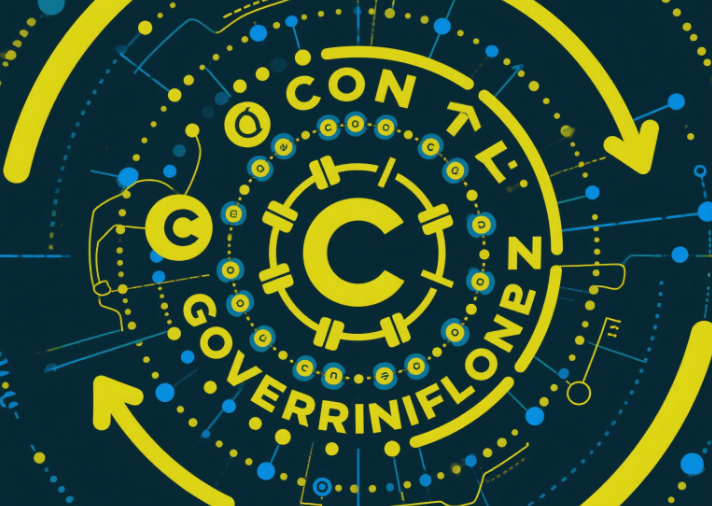In an era where blockchain technology is redefining trust and transparency, on-chain governance stands as a cornerstone of decentralized innovation. This revolutionary framework empowers communities to shape the rules of blockchain networks through automated, tamper-proof protocols, eliminating centralized control and fostering true decentralization. Below, we explore its mechanisms, challenges, and transformative potential—backed by cutting-edge examples and expert insights.
1. The Foundations of On-Chain Governance
On-chain governance refers to the self-executing decision-making systems embedded within blockchain protocols, enabling token holders to vote on protocol upgrades, resource allocation, and policy changes. Unlike traditional governance models, where decisions rely on centralized authorities, on-chain governance leverages smart contracts to enforce rules automatically, ensuring transparency and accountability.
Key Components:
- Proposals: Token holders submit ideas for protocol improvements.
- Voting: Staked tokens determine the outcome, often weighted by token ownership.
- Execution: Smart contracts automatically implement approved changes.
For instance, Ethereum’s EIP-1559 upgrade, which introduced dynamic transaction fees, was governed entirely on-chain, with stakeholders voting through smart contracts. This process minimized human intervention and ensured consensus-driven outcomes.
2. Evolution of On-Chain Governance Models
a. Token-Based Voting
Most DAOs (Decentralized Autonomous Organizations) use governance tokens to grant voting rights. Examples include:
- Uniswap (UNI): Token holders vote on liquidity pool incentives and protocol fees.
- Aave (AAVE): Proposals to add new assets or adjust interest rates are decided via token-weighted voting.
However, this model often favors large token holders, risking centralization. Projects like DoraHacks address this by implementing quadratic voting, where the cost of additional votes increases quadratically, empowering smaller stakeholders .
b. Decentralized Governance Protocols
Projects like Qtum’s DGP (Distributed Governance Protocol) demonstrate advanced governance frameworks. DGP uses smart contracts to automate decision-making, allowing communities to vote on protocol upgrades without hard forks. While its initial implementation faced limitations—such as rigid framework contracts and unclear role divisions—it paved the way for self-executing governance .
c. Futarchy and Predictive Markets
In 2025, Optimism experimented with Futarchy, a governance model that uses prediction markets to guide decisions. Participants bet on outcomes (e.g., which projects would grow TVL) using synthetic tokens, with results directly impacting OP token allocations. Though the experiment revealed challenges like data asymmetry and speculative gaming, it highlighted the potential of market-driven governance .

3. Challenges and Controversies
Despite its promise, on-chain governance faces critical hurdles:
a. Centralization Risks
- Whales and Sybil Attacks: Large token holders can manipulate votes. For example, in 2024, a whale exploited Balancer’s veBAL mechanism to redirect liquidity incentives, undermining the protocol’s goals .
- Low Participation: Many DAOs suffer from apathy, with only a fraction of token holders voting.
b. Technical Limitations
- Smart Contract Vulnerabilities: Bugs or exploits can derail governance. The DAO hack of 2016 remains a cautionary tale.
- Scalability: Complex governance models strain blockchain networks. Solutions like Ethereum’s Sharding aim to address this.
c. Regulatory Uncertainty
As governments grapple with crypto regulations, on-chain governance models must navigate compliance. For example, Swiss Trustnet’s hybrid blockchain integrates Swiss legal frameworks with on-chain governance, ensuring regulatory alignment while maintaining decentralization .
4. Innovations Reshaping Governance
a. Quadratic Funding
Platforms like Gitcoin use quadratic funding to allocate grants, where the number of votes a project receives is squared, amplifying support for niche but impactful initiatives. This democratizes funding distribution, aligning with the ethos of decentralized governance.
b. AI-Enhanced Governance
Emerging projects explore AI-driven proposal analysis, using machine learning to identify risks and predict outcomes. For instance, Aragon’s AI Governance Agent audits proposals for security flaws and aligns them with community values.
c. Cross-Chain Governance
Protocols like Polkadot enable governance across interconnected blockchains, allowing stakeholders to vote on shared standards and interoperability rules. This paves the way for a unified Web3 ecosystem.
5. The Future of On-Chain Governance
- Interoperability: Cross-chain governance will become essential as DeFi and NFT ecosystems grow.
- Regulatory Integration: Hybrid models (e.g., Swiss Trustnet) will bridge decentralization and compliance.
- AI and Machine Learning: Predictive analytics and automated enforcement will streamline decision-making.
As the space evolves, Bitora remains committed to delivering cutting-edge insights into on-chain governance, DAO dynamics, and decentralized innovation. Stay tuned for our latest analyses and market trends!








Leave A Reply